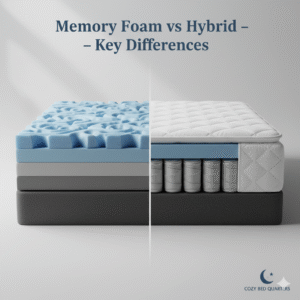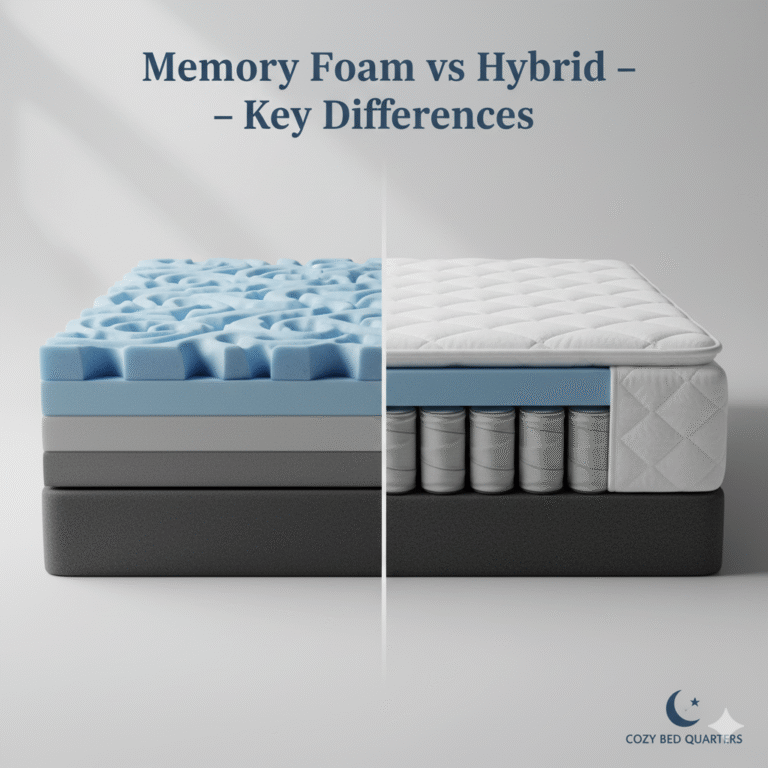Bedding Damp Yellow Musty Solutions for a Fresher Sleep
Bedding damp yellow musty issues are not only frustrating but also more widespread than many people realize—often caused by a combination of sweat, humidity, and inadequate airflow. These unpleasant stains and odors can quickly turn a cozy bed into an uncomfortable, unhealthy space. Fortunately, with a few simple, sustainable techniques, you can effectively eliminate these problems and keep your bedding fresh, clean, and inviting year-round. For deeper care, see our ultimate mattress cleaning guide.
Key Takeaways
- High humidity and body oils contribute to bedding stains and smells
- Regular washing and drying in sunlight kills bacteria and mold spores
- Dehumidifiers, natural fabrics, and breathable storage keep bedding fresh
- Natural cleaners like vinegar and borax can restore sheet brightness
- Improving airflow and mattress hygiene prevents recurring issues, even with bedding damp yellow musty buildup
Why Does Bedding Become Damp, Yellow, or Musty?
Bedding damp yellow musty conditions develop when environmental moisture meets personal hygiene. High humidity in rooms with little ventilation traps moisture in linens. Sweat, natural oils, and dead skin cells soak into the fabric, gradually yellowing it. When left unchecked, this creates the perfect habitat for bacteria and mildew, leading to foul odors and discoloration.
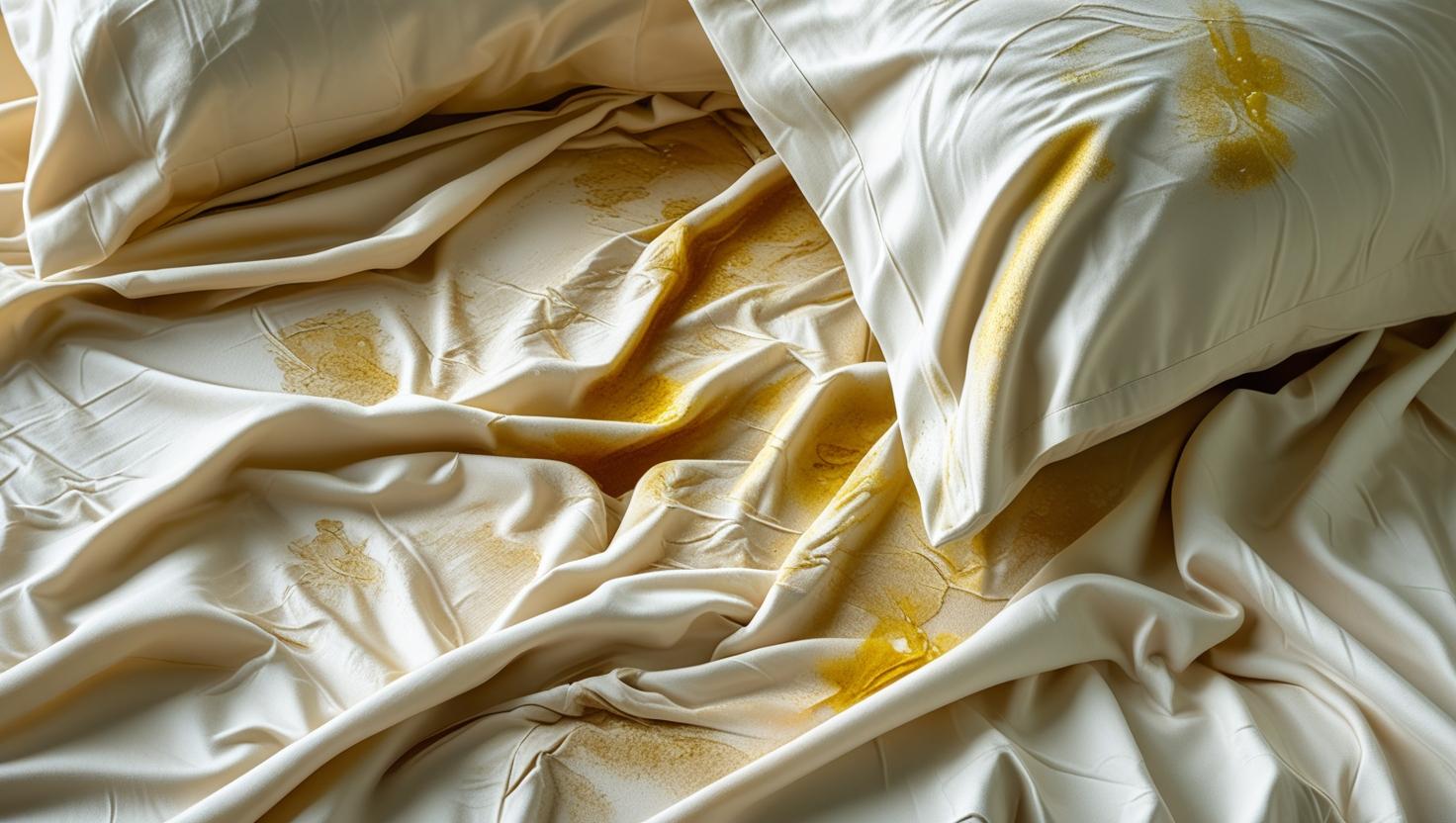
Understanding the root causes of bedding damp yellow musty conditions allows you to stop them before they worsen.
Health Risks Associated with Damp and Musty Bedding
Ignoring bedding damp yellow musty problems isn’t just a cosmetic issue—it can lead to serious health concerns. Damp bedding is a haven for dust mites, mold spores, and bacteria. These can trigger allergies, asthma, or skin irritation. The Sleep Foundation highlights that mold exposure can also worsen sleep quality and cause respiratory strain over time. If you’re sensitive to allergens, our notes on hypoallergenic mattresses explain how materials and construction can reduce triggers.
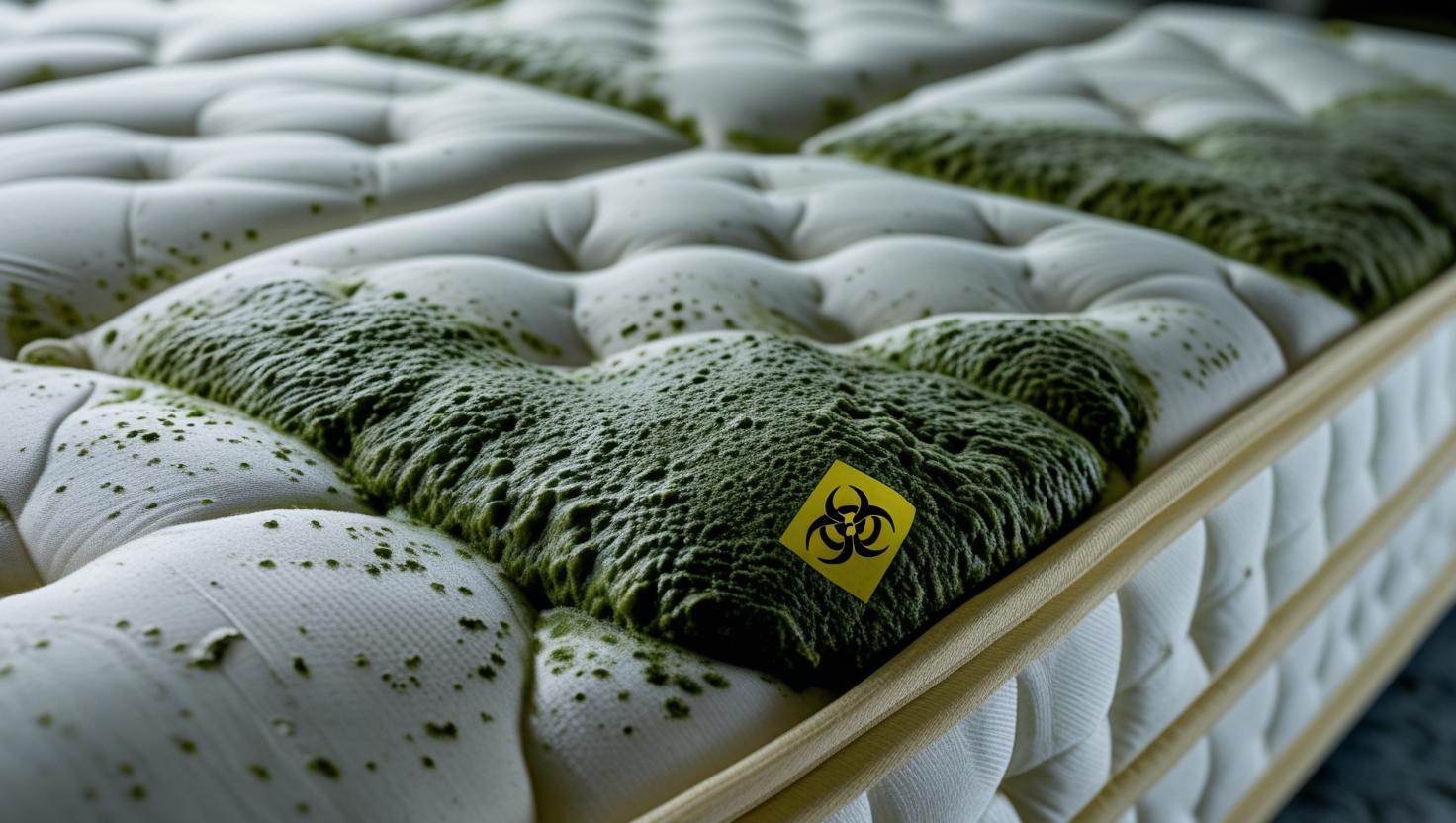
Clean, dry bedding is not just about comfort—it’s essential for your health and well-being.
Preventive Measures to Maintain Fresh Bedding
The best defense against bedding damp yellow musty problems is a proactive routine. Use a waterproof mattress protector and pillow encasements. Choose breathable sheets—cotton or bamboo—because synthetic fabrics trap heat and moisture. To sleep cooler year-round, see our guide to temperature-regulating bedding. Control indoor humidity with a dehumidifier and use ceiling fans or open windows daily.
- Wash bedding weekly in hot water above 130°F (55°C)
- Sun-dry when possible—the UV rays naturally disinfect
- Keep bedding off floors and avoid storing it in plastic bins
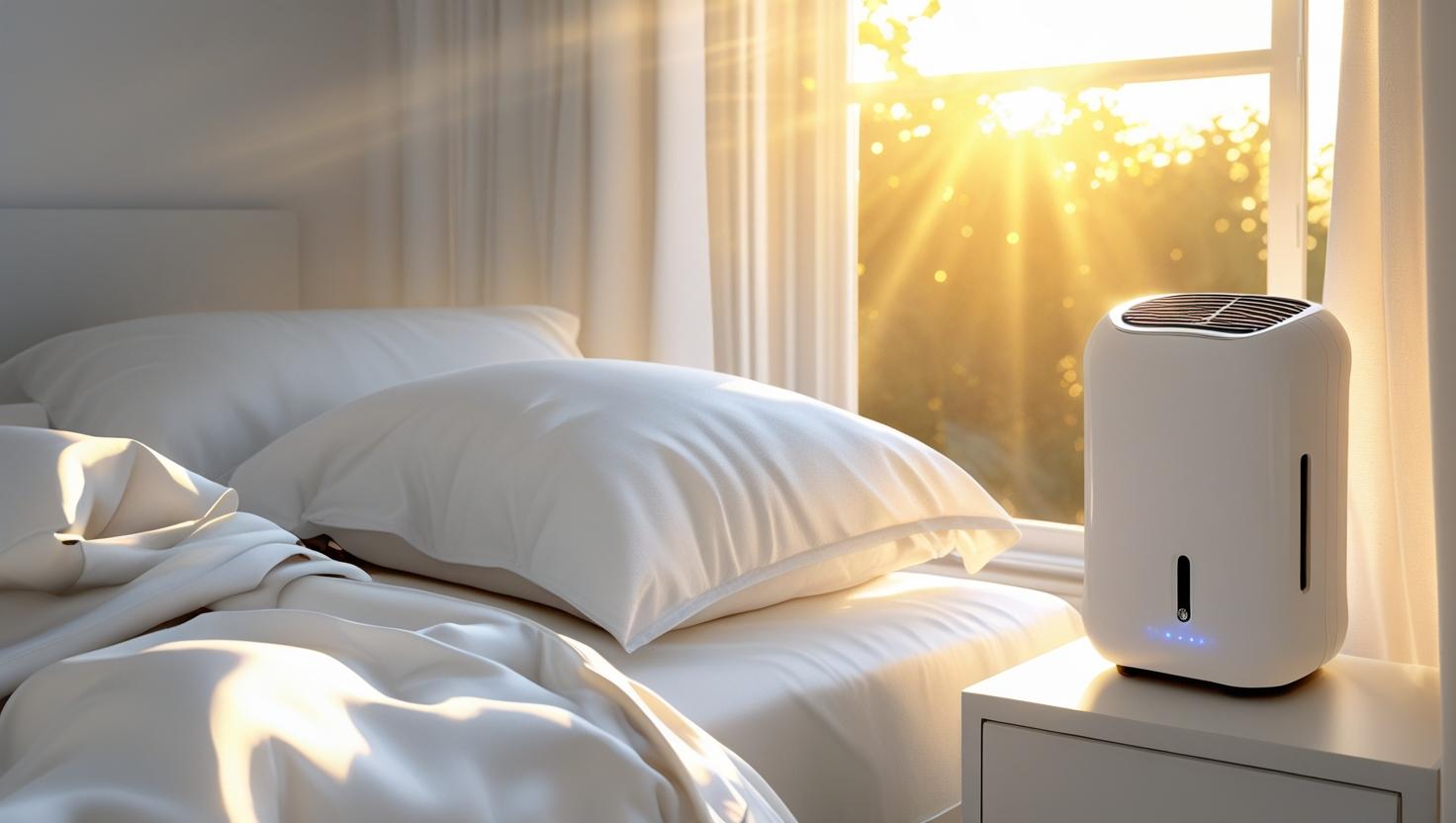
Simple changes in habits and environment can keep your bed clean and odor-free for the long term.
Effective Cleaning Solutions for Yellow Stains
Once bedding becomes yellowed, you don’t need to toss it out. Natural cleaning agents like borax, baking soda, vinegar, and lemon juice can lift stains without damaging fabrics. Pre-soak sheets for at least 8 hours in a borax solution before a hot wash, and always dry thoroughly.
- Vinegar + Baking Soda: Removes both stains and odors
- Lemon Juice: Great for spot-treating stubborn areas
- External source: More stain removal tips
Consistent use of natural stain fighters can restore your bedding and prevent further yellowing or mustiness.
Additional Tips for Bedding Care
To completely eliminate bedding damp yellow musty issues, maintain smart bedding habits. Rotate your mattress monthly. Sprinkle baking soda on your mattress and vacuum it after 30 minutes to deodorize. Keep a few sheet sets in rotation so each one gets proper rest and air time. For year-round comfort, here’s how to layer bedding the right way.
- Use lavender or cedar sachets to naturally repel moisture and pests
- Store bedding in breathable bags or cloth containers
- Deep-clean your mattress quarterly—see our mattress hygiene guide
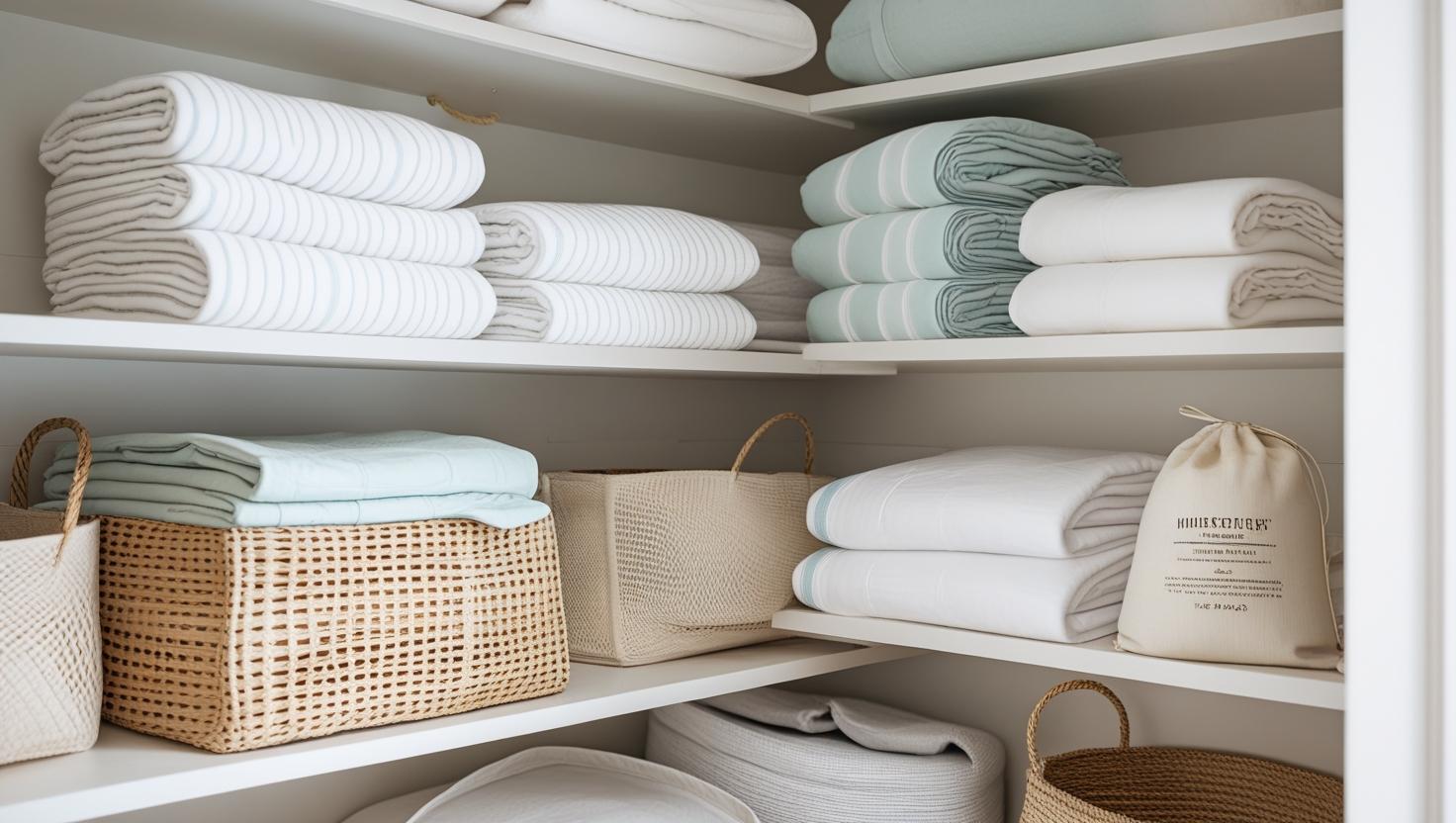
These small steps make a big difference in the freshness and longevity of your bedding.
FAQ
- How often should I wash my bedding to prevent musty odors?
- Wash bedding weekly in hot water to remove body oils and moisture that cause musty smells and yellowing.
- Can I use bleach to whiten yellowed sheets?
- Bleach can damage fibers. Use natural options like vinegar, borax, or lemon juice for safer whitening.
- What is the best way to store bedding to avoid dampness?
- Store bedding in cool, dry places using breathable fabric bags instead of plastic bins that trap moisture.
In short, tackling bedding damp yellow musty issues comes down to moisture control, smart fabric choices, and a consistent cleaning routine. Ready to refresh your sleep space? Start with one small change tonight and wake up to a cleaner, cozier bed.
Learn more in our mattress hygiene guide, temperature-regulating bedding, and how to layer bedding for comfort.




